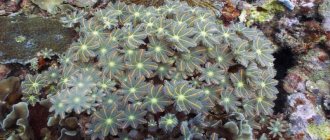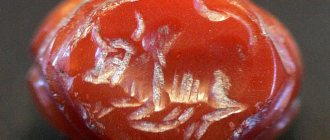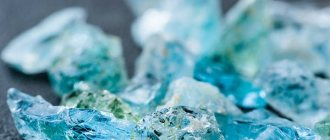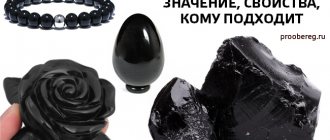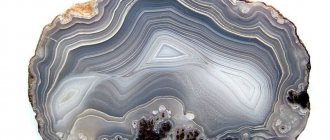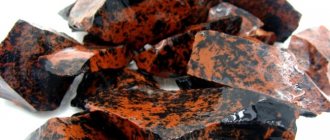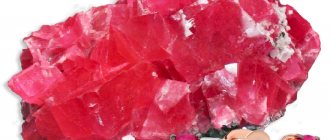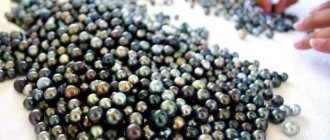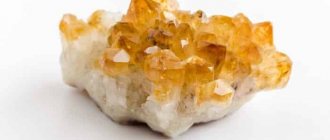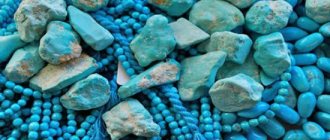Pearls, amber, coral and other gems are again at the peak of popularity today. Jewelry with these stones is natural, beautiful and more affordable than diamonds. Quite often they are chosen because of the energetic power inherent in the stone. However, when the stone is fake, there will be no effect - neither aesthetic nor energetic.
Therefore, when choosing natural gems, it is important to find a real stone.
We learned to create artificial versions of stones and fakes of different quality when we realized that this was a great way to make money. The high cost of natural corals, pearls and other gems leads to a large number of fakes appearing on the market. Regarding corals, these can be plastic beads or glass painted in the desired color. How to learn to identify real coral, how to distinguish a fake from a natural stone? Let's try to figure it out.
What is coral and what types do jewelers use?
Corals are not stones, but the external skeleton of an invertebrate predatory animal, roughly speaking, the “bones” of many polyps. The size of one individual of a marine organism in a colony is only 1-2 mm. During its life, the polyp, feeding on plankton, forms calcium and magnesium carbonate and iron oxide from the components of sea water, thus forming an exoskeleton. The organic component of 1% gives the color shades of corallite. The color is also affected by the depth of habitat.
Silver pendant with corals and cubic zirconia, SL; silver earrings with corals and cubic zirconia, SL; silver ring with corals and cubic zirconia, SL (prices via links)
Corallite of the same species, but grown in different conditions, differs in shape and color. Coral trees grow slowly: a few millimeters per year in width, and 1-7 cm in length. Overgrown coral reefs still slow down their growth and are destroyed over time. Coral polyps can live in any ecologically clean seas at temperatures up to +4 °C, but build reefs only where algae survive, providing the colony with nutrients, that is, at a temperature not lower than +18 °C.
Medicinal properties
In Ancient Greece, coral powder was taken for severe poisoning and abdominal pain. In the Middle Ages, potions based on the mineral were used to relieve fever. Coral is still used in medicine today, as it has numerous therapeutic properties.
Coral primarily has a healing effect on the condition of the musculoskeletal system. Treats diseases of the spine and joints. It also has a beneficial effect on the condition of teeth and gums. In alternative medicine, powder obtained from corals is included in drugs for osteoporosis.
Important! Corals have a positive effect on the state of the circulatory system. The anti-inflammatory and antitumor effects of the stone were also noted. Sea gems help speed up the healing process of wounds on the skin and mucous membranes.
If you wear beads around your neck, it will help protect against respiratory and heart diseases. Wearing products made from sea stone promotes rapid recovery of ligaments after prolonged stress.
A positive effect of coral on metabolism, blood sugar and cholesterol levels has been noted. The stone also promotes the natural removal of harmful substances from the body. It has a beneficial effect on the state of the nervous system, eliminating neurosis, insomnia, and irritability.
Coral is rightfully considered an accurate indicator of health, responding to changes in the composition of human sweat. The latter is observed during inflammatory and malignant processes in the body. Therefore, if coral jewelry changes color or fades, you need to pay increased attention to your own health.
Do you like coral stone and jewelry with this mineral?
Very Not particularly
Types of Natural Corals
According to the place of extraction, coral raw materials for jewelers are divided into Mediterranean and Pacific. The following types of natural corals are distinguished:
- Approximately 25 types of coral polyps are formed from calcite and aragonite (a polymorph of calcium carbonate). Jewelers call them “noble”. These are mainly gorgonians - horny corals of the species Corallium rubrum with different colors: from white to black, more than 350 shades. Each color has its own name, sometimes poetic: “angel skin”, “ox blood”, “greatest”, “sea bamboo”. Most often, red and pink are used for stone cutting. Moreover, in the old days, dark ones were specially lightened, but now white ones are tinted to a bright color.
- There are also soft coral polyps that harden in air, while remaining quite porous. May consist entirely of organic material . On the Internet they are most often called “Black Akkabars”. But this is not entirely true. Because completely organic polyps, such as the endangered fan Ctenocella or Ellisella, can come in other colors: red-pink, black, even gold, blue and amethyst.
- There is a fossilized agate coral . Deposits have been found in the USA (Florida and Michigan) and in Russia, but are not yet widely used.
Gold pendant with diamonds, amethysts and coral, SL;
gold earrings with diamonds, amethysts and coral, SL; gold ring with diamonds, amethysts and coral, SL (prices via links) Coral branches with greater hardness (from 3.5-4) are valued, they are called “royal”. These are usually deep-sea species. Previously, the difficulty of extraction and hardness prevented their use in jewelry, so more easily processed ones were common. Currently, it has become easier to obtain ornamental material, but since 1963 there has been a ban on harvesting corals in many countries due to the IUCN (World Conservation Union) resolution.
Which zodiac sign can wear it and who can't?
Coral is a reliable talisman for people born under the sign of Pisces, Cancer and Scorpio. It is recommended to choose stones that are brown or deep red. Such corals will bring good luck and help you gain self-confidence.
Coral will help Aries and Taurus gain strong protection from evil forces. Libra and Sagittarius will find sea stone useful in establishing harmonious relationships with the outside world. Coral of rich tones will help Leo and Sagittarius find good luck.
The stone is strongly not recommended for Virgos and Capricorns, since the energy of coral contributes to the development of negative qualities in representatives of these zodiac signs.
By color type
Pink corals are ideal for people who have a spring or autumn phototype of appearance (brown or green eyes, warm hair). White or black are suitable for the winter phototype, which is characterized by blue or gray eyes, as well as deep dark hair.
It is also important to correctly combine coral jewelry with the colors of clothing and other accessories. The stone goes well with natural bright colors, but it is better not to combine it with gray, brown, or olive.
How corals are faked
Demand, slow recovery, death of reefs due to ecology and predatory extermination, bans on mining determine the high price of natural coral products. Real red coral is an expensive rarity; one bead can cost about $50. Instead, at best, they will sell you painted white. At worst:
- Imitations, which are quite possible, if they are declared so.
- Counterfeits. When a low-quality or outright fake made of minerals, glass, polymers or plastic is passed off as a high-quality item. This is a scam.
“Sea trees” have been used in jewelry since time immemorial, and even then there were fakes; they were found in ancient burials. Glass beads imitating coral beads were found in Tutankhamun's tomb.
It is cost-effective to fake only colored types of coral, because white is cheap. Previously, glass, fossilized painted bones (odontolite), porcelain, horn, and minerals: quartzite, howlite, cacholong were passed off as coral beads.
With the growth of technology, there are more ways to fake corals: polymer resins, plastics, neolith (a combination of copper phosphate and aluminum hydroxide) appeared.
Separately, there are “pressed” coral blanks. Crumbs and powder of mollusk shells, as well as the mineral aragonite or lime spar (calcite), are decolorized by acid treatment and combined with polymer composites. Then they paint over it. The only thing relevant to the marine exoskeleton of the polyp is that the fake contains calcinite.
Since the 70s Synthetic “Gilson coral” is also made from calcite powder. (Named after the owner of a Swiss company, who also invented a cheap substitute for black opals.) And recently, a new technology for simulating a rare Hawaiian gold variety has appeared in the Philippines.
If a good imitation is offered at a reasonable price, especially from “long-lasting” minerals like howlite, then the purchase is quite successful. It's a shame when a fake is passed off as expensive coral.
Silver earrings with cubic zirconia and corals, SL; silver ring with cubic zirconia and coral, SL (prices follow links)
Coral calcium is a sure cure for fractures
Corals not only have divine beauty, but can also heal their owner. Wearing jewelry with coral improves the functioning of the cardiovascular system, heals all kinds of ulcers and abscesses, treats tumors, helps activate metabolism, and also has a positive effect on blood circulation.
People suffering from asthma or thyroid diseases can fully experience the miraculous healing effects of the stone. The effect will be enhanced several times if you wear it as a bead around your neck. Then you can protect yourself from nervous tics, scarlet fever and even sore throat.
Coral has a calming effect during nervous excitement and stressful situations. It helps with insomnia and severe headaches.
Lithotherapists highly recommend this miraculous natural medicine to singers, speakers, dispatchers - people whose work is related to the voice and tension of the vocal cords.
Today, the stone is often added to all kinds of medicines. First of all, because the calcium it contains acts much faster and more efficiently than usual. Especially if you take it with water orally.
Coral acts as a source of special hormones that have a positive effect on the entire human body. Scientists have proven that it significantly increases the elasticity of joints and muscles, normalizes blood sugar, cleanses the excretory system and significantly reduces the risk of diseases of the cardiovascular system.
In addition, coral normalizes protein metabolism in the body, improves the functions of the uterine muscles and the functioning of the digestive and respiratory systems. If we turn to the works of Pliny the Elder, we can discover one interesting fact. In ancient times, healers ground coral into powder, and then used it to treat poisoning, bladder diseases and intestinal spasms. In the East, a similar remedy is still used to heal fractures.
It is known that in the Middle Ages people took coral powder as a hemostatic and antipyretic agent. Today, the Japanese actively use white stones in dental prosthetics and in bone restoration after dislocations and fractures.
How to distinguish coral from a fake?
To distinguish coral from a fake you need to know the following:
- Real coral is rarely uniformly colored. Banding is its distinctive feature.
- When a coral branch is cut crosswise, the radiant structure is clearly visible. And “pressed” consists of pieces and crumbs.
- Untreated corals are matte and are rubbed with waxy polishes. Often defects are corrected with certain resins. Jewelers call the procedure “stabilization.” In addition to its decorative function, such a layer also has a protective function, because corals are fragile. But the coral shine is not glassy, but softer, “oily”, unlike mineral, porcelain and glass imitations. If coral is heated, it will lose its shine.
- If you heat it for a very long time, it will turn gray, become covered with a mesh and crumble. Polymer resins in “blends” will give off a plastic smell and turn black.
- The minerals are also brittle, but the needle-like fracture of coral beads differs from the lamellar fracture of calcite and the smooth fracture of howlite.
- After lying in water, natural sea material will become brighter, and fake material will not absorb liquids.
- If the water turns pink, you most likely purchased a poorly colored white one. Dyed coral can be recognized by its irregular, web-like spots.
- Corals are lighter than marble, neolithic stones. And they don't feel so cold to the touch.
- Corallite dissolves in acids, however, fakes containing calcinite can also react with them (hiss).
- Completely organic types of coral do not react to acids, but burn. And not as intense as the horn. And odontolite has a cellular structure when viewed through a magnifying glass.
- If painted fakes made from other materials are scraped, the paint layer will peel off.
- Plastic can be easily identified by weight, type and price.
The main difference is that a high-quality coral item cannot be cheap
And when purchasing rare specimens, it is worth contacting an appraiser who knows how to distinguish corals from fakes. It is better to purchase jewelry with coral inserts from trusted places with a good reputation.
Main conclusions
- Coral is a stone formed from the skeletons of marine invertebrate organisms - polyps.
- In nature they are found in white, pink, red, black and blue shades.
- You can check the authenticity of a mineral at home, knowing its physical properties. Real stone is light, and when heated it becomes dull. When placed in a glass of water, it absorbs a certain amount of liquid. If you touch a gem with a hot needle, there will be no black dot left on it, which cannot be said about artificial coral.
- The hue of a mineral is determined by the ratio of organic and inorganic substances in its composition.
- Corals are credited with numerous magical and healing properties. The stone helps strengthen the musculoskeletal system, nervous and cardiovascular systems. Also promotes accelerated wound healing. From the point of view of magical properties, it attracts good luck and protects a person from evil forces.
- According to the zodiac sign, it is ideal for Pisces, Scorpios and Cancers. It is not advisable for Capricorns and Virgos to wear the gem.
- The cost depends on external characteristics. If the price of finished jewelry is considered, the presence of precious metals is taken into account.
Origin story
It is believed that corals were one of the first stones used by ancient peoples to make jewelry, ritual objects, and amulets.
The inhabitants of the Mediterranean 25 thousand years ago found corals in the depths of the sea. Proof of this is the pink coral beads found at the site of the nomadic people.
The stones lifted by divers from the seabed quickly lost their beautiful appearance, so the craftsmen quickly mastered grinding - the processing returned the natural shine to the corals.
Physical and chemical properties
Corals are composed largely of calcium carbonate, but may contain additional elements. About 1% of the total mineral is organic; black ones are almost 100% organic. The structure of the mineral is porous; it easily disintegrates in acids and under the influence of high temperatures.
| Formula | Ca(CO)3 |
| Color | More than 350 colors, including shades of red, pink, orange, blue, white and black |
| Probable impurities | Manganese, iron, magnesium and calcite |
| Shine | Before processing, matte or absent, after - glassy or waxy |
| Hardness | Average 3.75, blacks are softer (from 1) |
| Transparency | Opaque |
| Strength | Soft and fragile |
| Kink | Splintered |
| Density | 2.6-2.7 g/cm3, for blacks – 1.32-1.35 g/cm3 |
| singonia | Amorphous |
Compatibility with other stones
Coral is a bright, beautiful and interesting mineral, but it lacks sparkle. Therefore, it is often combined with pearls. This combination is successful both aesthetically and energetically.
“Gift of the Sea” is compatible with many gems, but the main principle of their choice is color. It is recommended to combine dark and bright corals with light stones, white ones with colored ones.
Magnificent coral inserts are adjacent to amethysts and agates, turquoise and lapis lazuli, onyx and sapphire.
It is not recommended to use corals with jasper, malachite, beryl and sardonyx in one piece of jewelry.
Coral products and jewelry
Red coral jewelry
A lot of different products are made from coral - jewelry, all kinds of souvenirs, decorative elements and much more.
The most popular are coral beads.
The cost of the products depends on the type of mineral used, the rarity of its color, and the metal of the frame, if any. For example:
- Beads made from five strands of pink coral can be purchased for $180, and from one strand of red stones – for $87.
- Set of earrings + pendant (one red bead per item with silver fittings) – for $32.
- A set (short beads, bracelet, earrings) made of stones of various shapes with geometrically regular outlines - for $77.
- Set (short beads + earrings) made of rare blue coral – for $130.
- Coral bracelet with fancy baroque pearls for $148.
- Silver rings and earrings with large cherry inlays - $89.
- Silver and gold-plated earrings with two small coral beads - $47.
- Rare gold brooch-pendant with a white coral insert, made in the form of a cameo - for $487.
Mineral deposits
Corals in the sea
Polyps, the progenitors of corals, live only in warm waters, where the water temperature is never colder than 21 degrees. The largest growing areas are the Pacific and Indian Oceans, the Red, Caribbean and Mediterranean Seas, as well as the Canary and Midway Islands, the shores of Taiwan and Japan, Tunisia and Algeria, Turkey and Australia, Yugoslavia and Sardinia.
Off the northeast coast of Australia is the world's largest coral reef. Its length is 2.2 kilometers. And off the Israeli coast there is the Eilat Reef, 1.2 kilometers long.
There are two main ways to harvest coral:
- Manual - specially trained divers remove coral elements from the bottom. This method is difficult and dangerous, and the production volumes are relatively small, so it is not used so often.
- Through special large-mesh nets that run along the bottom, capturing a large amount of material. The disadvantage of this mining method is that a lot of coral is damaged in the process.
Varieties
There are about 2,000 types of polyps. Each variety is interesting and attractive in its own way. Since it is very difficult to remember all the colors, jewelers use the following classification:
- Pink-silver or “angel skin”.
- "Rose Vivo" the color of dawn.
- White, which is one of the rarest. It is used only by jewelers.
- Orange-pink or “second color”.
- Black. It lacks calcium. The stone belongs to the “Akkabars”.
- Blue is a rather rare species.
- Bright red or "rosso".
- Brown spongy. Refers to "arquisuro carbonetto".
- Dark red from Japan and Indonesian islands. It is also called “rosso scuro”.
Where is coral mined today?
Coral reefs today are common in the Mediterranean and Red Sea. They can be found in the waters of the Pacific Ocean, off the coast of Japan, Australia and Africa. The coral reefs in the photo of the Red Sea are especially wonderful. Processing of gems and making jewelry from them is carried out on a large scale in Algeria, Italy, Tunisia, India and France.
It is worth noting that corals that do not grow deep are constantly threatened by fishermen, ships, as well as changing climatic conditions. Every year, populations of polyps that form coral reefs are declining. This is especially noticeable in the Mediterranean Sea.
The most famous museum, which houses incredible collections of coral jewelry, is located in Naples. There you can admire products that were created many centuries ago, as well as look at jewelry made by the hands of modern jewelers.
Description of the magical properties of coral stone
Hindus believe that coral minerals protect their owner from unwanted relationships, angry people, and hasty decisions. The pagans called the stone prophetic and prophetic. Having predicted the future, he will protect a person from unnecessary meetings, the evil eye, and negative interference from bad people. Ukrainians in the Carpathians used coral rosaries to get rid of damage, curses and cleanse human energy in general.
Among the properties of coral stone there is an influence on the psycho-emotional perception of the owner.
- Shy people gain confidence with it.
- Overly vain people become merciful.
- A traveler setting off on a long journey, taking with him a mineral from his father’s house, will certainly return back.
Coral is considered a stone for vulnerable individuals, eliminating unnecessary worries and panic from them, filling them with determination, calmness, and carelessness. It helps to start a new business, especially for those who are indecisive and afraid to act. With it, all changes in the life of the owner will go smoothly if you wear coral beads, a medallion or a bracelet.
Corals will fill you with energy and make you act
Traditionally, red coral is associated with men. But this does not at all prohibit female representatives from wearing it. It helps weak creatures in cases where they doubt, do not clearly see the surrounding reality, their purpose in life.
The natural origin of the sea mineral makes it safe for anyone.
- The stone was revered by the Sumerians, who were considered the first inhabitants of the Earth.
- In Ancient Egypt it was called a symbol of immortality.
- The Greeks used it as a powerful amulet against various adversities and unwanted turns of fate.
Many peoples believed that this stone reliably protected travelers. On a long journey they always took coral beads, which helped them find the right path, settle well in a new place, and protect themselves from troubles on the road.
The owner of a coral amulet is always looking for adventures and new exploits.

